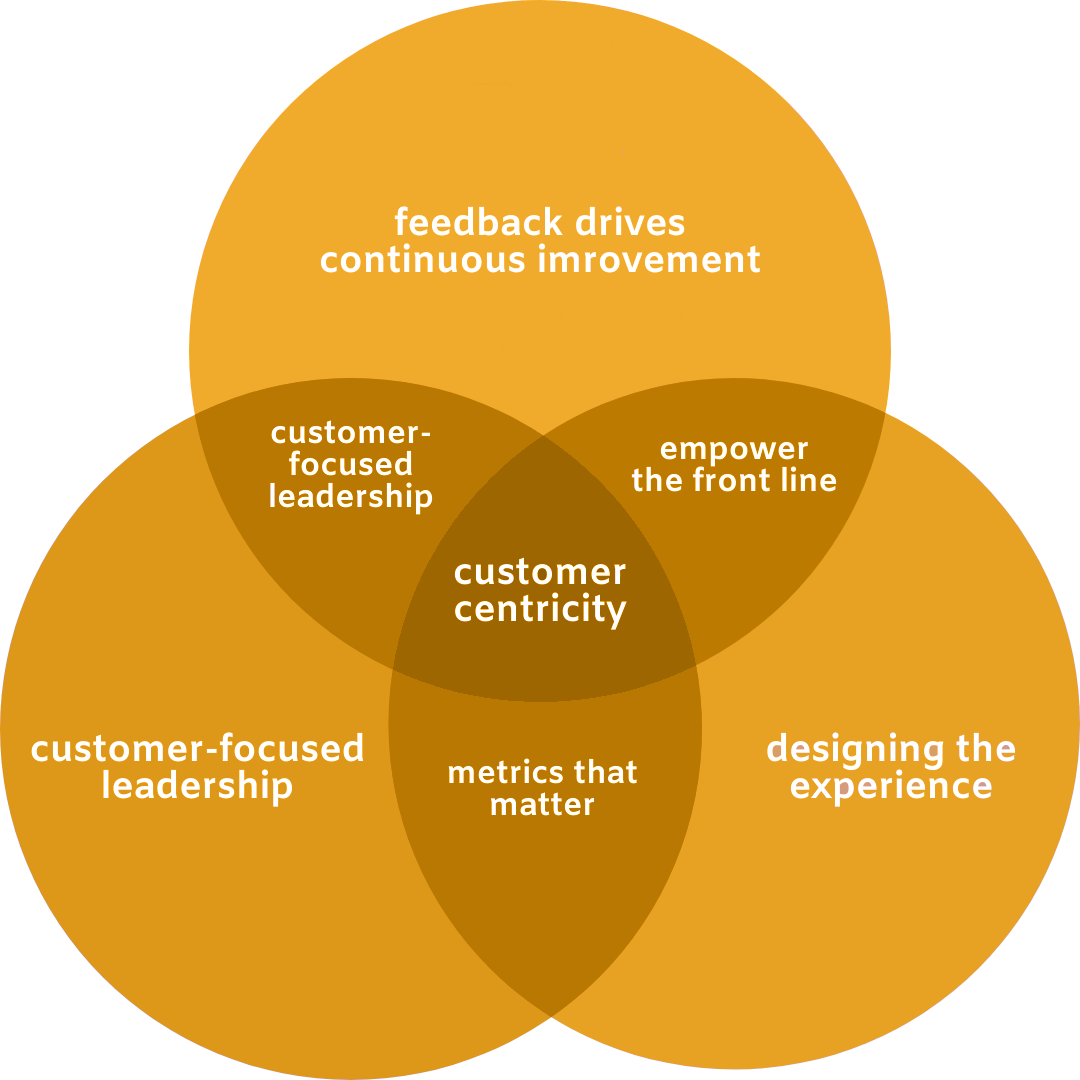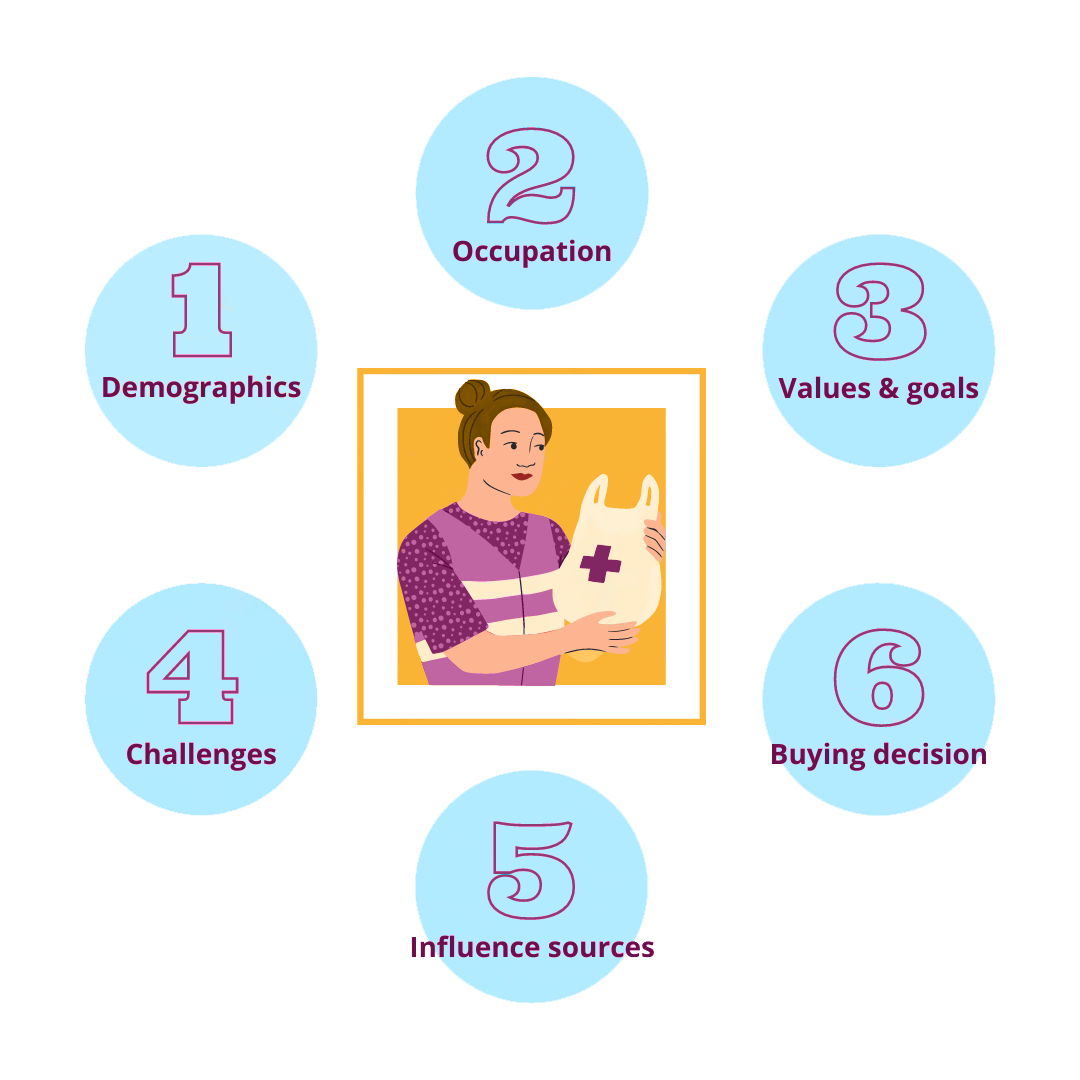
Subscribe to our newsletter!
We don't spam. You will only receive relevant and important tips for you and your business.
Unsubscribe anytime.
In order for a marketing campaign to be successful, it must resonate with its intended audience. You can advertise your products all you want, but unless you can explain how they will satisfy a specific problem your customer faces, it will fall on deaf ears.

A customer-centric marketing approach, as opposed to product-centric, is designed around customer needs. It is about providing a positive customer experience before, during, and after the sale in order to drive repeat purchases and earn loyal customers.
Instead of pushing one-time sales to as many customers as possible, customer-centric businesses see the first transaction as an opportunity to drive long-term value by building long-lasting relationships.
The goal is to target the right customer on the right channel with the right message at the right time. However, creating a customer-centric marketing strategy today is increasingly complicated. As more and more businesses trend toward this model, customers' expectations have risen.

Advancements in digital technology have placed the power in the hands of the buyer. Now, customers have plenty of choices, can directly communicate with brands 24/7, and as mentioned above, have higher expectations.
This means that businesses cannot get away with offering a mediocre service or customer experience.
Retaining customers over time is much more cost-effective than converting new customers. According to Forbes, it costs five times more to attract a new customer than to retain an existing one. By paying attention to your customers’ needs, you can reduce your marketing costs while bringing in more sales and profit.
Research by Harvard Business School found that increasing customer retention rates by 5% increases profits by 25% to 95%.
Though retained customers make repeat purchases, customer retention is not the same as customer loyalty.
Related: How Multigenerational Customer Service Can Win Over Every Age Group
Many retained customers become loyal customers. A loyal customer prefers to buy from a certain brand. Loyal customers end up being worth ten times their original purchase.
Loyal customers also act as brand ambassadors. They’re more likely to recommend a brand they’ve had a good experience with to friends and family. Bain & Company found that after 10 purchases, shoppers refer 50% more people to a store than a one-time purchaser.
Successful customer-centric marketing requires a deep understanding of your customers and why they need what your business provides.
Ask yourself these questions:
Answering the questions above will help you craft a buyer persona, which is a document that represents your ideal customer. This fictional character will help you figure out how to communicate with your audience and uncover what problems they may face every day.

Google Analytics provides insight to your website visitors. From demographics, to how they found your site, to what they did when they arrived on your site.
Social listening is the practice of monitoring conversations happening on social media to better understand consumer opinions.
Surveys are a quick and cost-effective way to collect customer insights and improve ROI. They can be administered directly to consumers through web-based links, mobile applications, or text messages.
Through surveys, you can gather how customers feel about a product or service, which marketing messages speak to them the most, and get feedback on products or campaigns. This data can help you determine what is important to your target audience.
To create a customer-centric company, you need to communicate both frequently and regularly with your customers to learn what your customers want.
In today's digital world, there are countless touchpoints where you can communicate with customers to collect feedback:
By learning more about your customers through both data and direct communication, you can anticipate their needs to provide products and services that will benefit their lives.
Related: When is the best time to send SMS?
After you’ve uncovered what specific needs your product or service can fulfill for your customers, the goal is to communicate how it will improve some aspect of their lives.
Social media allows small businesses a bigger platform to reach new customers and directly interact and engage with current customers to connect and build loyalty.
There are multiple platforms on which your business can build a presence, but you don’t have to be on all of them. In fact, your brand shouldn’t be on a platform just because it exists. Which platforms you incorporate into your strategy will depend on where your target audience is online, how users interact with your brand, and your business’s own mission and values.
Every business needs a professional website that encompasses its brand values, benefits, and unique value proposition. This should be communicated through the site design, copy, photos, and content.
The website should also provide a valuable, relevant, and positive user experience.
When your customers experience your brand through relevant, engaging content that actually improves their lives in some meaningful way, they’ll develop a more positive association with your brand.
Content marketing is the practice of providing relevant and useful content to your audience. A common method is blogging, but other methods include social media, videos, newsletters, podcasts, infographics, webinars, and more.
When crafting content, consider these three questions:
Content marketing isn’t about your brand, products, or services. It’s about benefiting your audience and what they care about.
The goal of content marketing is to provide such good information to your readers that they become loyal customers.
In order to stand out among competitors, a brand must go above and beyond to prove that it's invested in delivering a positive customer experience. This doesn’t just include the traditional customer journey, but well beyond the point of sale.
Instead of only providing a contact number on your website, include a range of communication channels, such as email and social media. Letting customers get in touch with you through the most convenient channel of their choice will help you serve them more effectively.
Also, allowing your customers to help themselves and answer issues empowers the customer. This can include creating an FAQ page or step-by-step guides for troubleshooting issues.
These two measures will help to identify and resolve customer issues before they become problems.
So, what are you waiting for?
Grow Your Business with a Customer-Centric Marketing Strategy